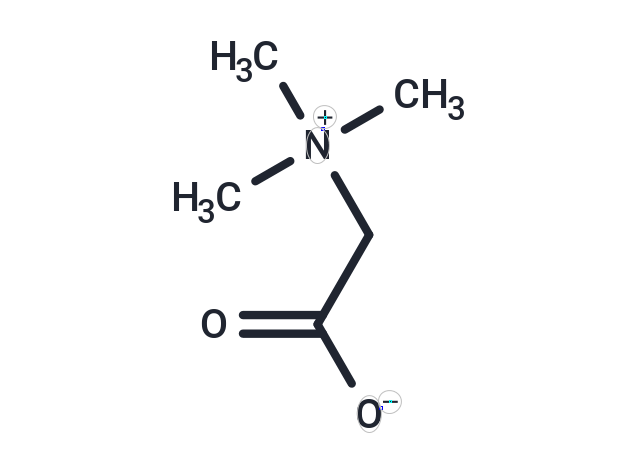Shopping Cart
- Remove All
 Your shopping cart is currently empty
Your shopping cart is currently empty

Betaine (trimethylglycine) is a methyl derivative of glycine first isolated from sugar beets. It has been shown to have potential benefits for fighting heart disease, improving body composition, and helping promote muscle gain and fat loss because of its abilities to promote protein synthesis in the body.

| Pack Size | Price | Availability | Quantity |
|---|---|---|---|
| 1 g | $42 | In Stock | |
| 5 g | $59 | In Stock |
| Description | Betaine (trimethylglycine) is a methyl derivative of glycine first isolated from sugar beets. It has been shown to have potential benefits for fighting heart disease, improving body composition, and helping promote muscle gain and fat loss because of its abilities to promote protein synthesis in the body. |
| Alias | trimethylglycine, oxyneurine, lycine, glycine betaine, Abromine |
| Molecular Weight | 117.15 |
| Formula | C5H11NO2 |
| Cas No. | 107-43-7 |
| Smiles | C([N+](C)(C)C)C([O-])=O |
| Relative Density. | 0.7 - 0.77. Temperature:22 °C. |
| Storage | Powder: -20°C for 3 years | In solvent: -80°C for 1 year | Shipping with blue ice. | |||||||||||||||||||||||||
| Solubility Information | Methanol: 0.1 g/mL, Sonication is recommended. DMSO: 5 mg/mL (42.68 mM), Sonication is recommended. | |||||||||||||||||||||||||
Solution Preparation Table | ||||||||||||||||||||||||||
DMSO
| ||||||||||||||||||||||||||

Copyright © 2015-2025 TargetMol Chemicals Inc. All Rights Reserved.